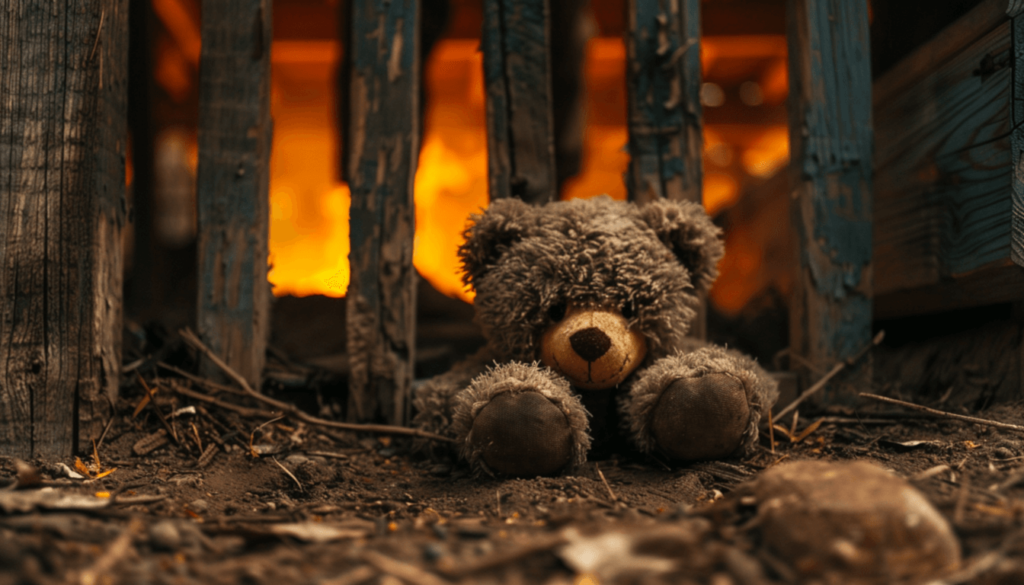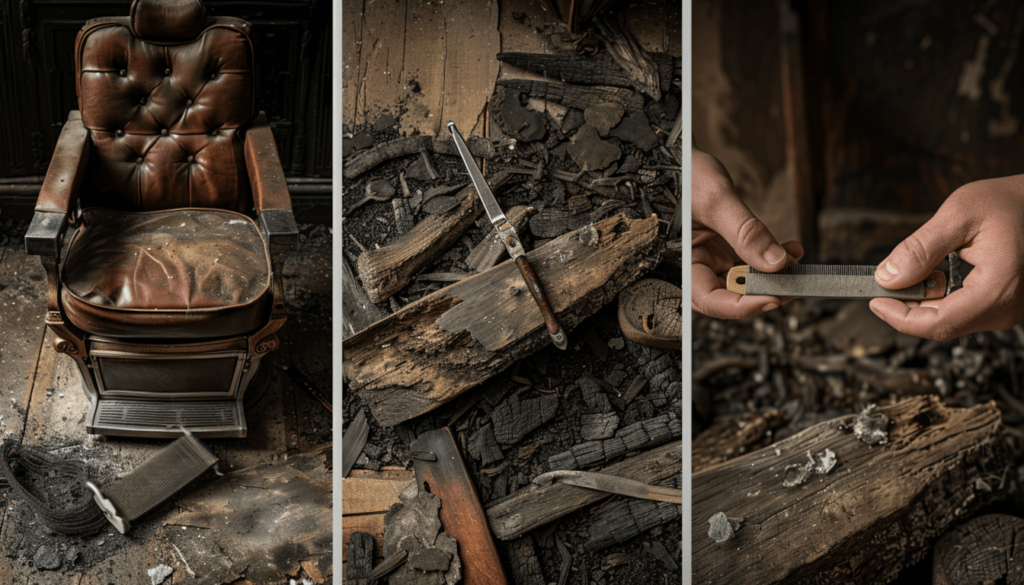The 1921 Tulsa Race Massacre, one of the darkest chapters in American history, devastated the thriving community of Greenwood, also known as Black Wall Street. The survivors of this tragedy, however, displayed remarkable resilience, courage, and a steadfast determination to rebuild their lives and preserve their community’s legacy.
This article delves into the personal accounts of survivors, offering a glimpse into the human experiences that defined Greenwood before, during, and after the massacre. These stories not only honor the memory of those who endured but also provide vital lessons on resilience, justice, and the enduring power of community.
These stories echo the resilience of Greenwood’s founders and visionaries. For context on the leaders who built Black Wall Street, see Founders and Visionaries of Black Wall Street.1. Dr. Olivia Hooker: Survivor of the Tulsa Race Massacre and Civil Rights Pioneer
Dr. Olivia Hooker, one of the youngest survivors of the Tulsa Race Massacre, experienced unimaginable trauma at just six years old. Her family’s home and her father’s successful clothing store were destroyed in the violence. Hooker vividly recalled watching white mobs ransack and burn her neighborhood, memories that would stay with her for a lifetime.

Despite this early adversity, Hooker’s life became a shining example of resilience and achievement. She broke barriers as the first African American woman to serve in the U.S. Coast Guard, demonstrating her commitment to service and excellence. Later, she earned a doctorate in psychology, dedicating her career to understanding and supporting others.
Hooker’s advocacy extended beyond her professional life. She became a staunch supporter of justice for the survivors of Greenwood, tirelessly working to ensure the massacre’s history was recognized and remembered. Her legacy continues to inspire efforts toward equality and justice, reminding us of the enduring power of resilience and determination. Learn more about Dr. Hooker’s impact through resources like the Tulsa Historical Society and Museum and the Greenwood Cultural Center.
These firsthand accounts echo the resilience of Greenwood’s survivors. For additional portraits and interviews, visit the John Hope Franklin Center’s Primary Sources archive, which includes survivor interviews, historic maps, and archival documents.
2. Ellis Walker Woods: Greenwood Educator Who Rebuilt After the Tulsa Race Massacre
Ellis Walker Woods, principal of Booker T. Washington High School in Tulsa during the Tulsa Race Massacre, witnessed firsthand the devastation wrought upon Greenwood. The destruction of homes, businesses, and institutions deeply affected his students and their families, leaving many displaced and without hope. Despite these overwhelming challenges, Woods emerged as a pillar of resilience and leadership in the community.

Recognizing the critical role education played in recovery and empowerment, Woods immediately began efforts to reopen the high school. Operating in temporary facilities and with limited resources, he remained steadfast in his mission to provide a stable and nurturing learning environment. His dedication ensured that the children of Greenwood had access to the education they needed to rebuild their futures.
Woods believed that education was more than a tool for personal advancement—it was a cornerstone for collective resilience. By fostering a sense of purpose and opportunity among his students, he helped lay the groundwork for Greenwood’s partial recovery in the years following the massacre. His legacy as an educator and community leader underscores the transformative power of knowledge and determination in the face of adversity.
3. George Monroe: Child Survivor of the Tulsa Race Massacre
George Monroe was just five years old when his family’s home was consumed by the flames of the Tulsa Race Massacre. Too young to fully understand the events unfolding around him, Monroe’s most vivid memory was of his family hiding beneath their porch, seeking refuge from the violence. Above them, mobs rampaged through Greenwood, destroying homes and businesses while gunfire echoed in the air.

Decades later, Monroe recounted the terror of that night, sharing the fear he felt as a child and the sights of flames engulfing his neighborhood. His story provides a unique and poignant perspective on the human cost of the massacre, offering a window into how such violence impacts even the youngest members of a community.
Monroe’s reflections serve as a somber reminder of the generational trauma inflicted by the massacre. His testimony ensures that the experiences of the most vulnerable are not forgotten, highlighting the enduring need to confront and learn from this painful chapter in history.
4. W.D. Williams: Tulsa Race Massacre Survivor and Greenwood Educator
W.D. Williams, the son of Greenwood residents who owned a theater and a confectionery store, was a teenager during the Tulsa Race Massacre. His family’s businesses, symbols of their hard work and success, were among the countless establishments destroyed during the attack. Despite losing everything, the Williams family exemplified resilience and determination, refusing to let the devastation erase their legacy.

Determined to ensure the stories of Greenwood and its people were not forgotten, Williams became a tireless advocate for justice and historical preservation. Through public speaking engagements, interviews, and community activism, he shared his personal account of the massacre, shedding light on the systemic racism that fueled the tragedy.
Williams’ efforts were instrumental in bringing attention to the experiences of survivors and the broader implications of the massacre. By keeping the memory of Black Wall Street alive, he not only honored the resilience of his family and community but also contributed to the ongoing fight for racial justice and equality. His voice remains a vital part of the effort to ensure the lessons of Greenwood’s rise and fall continue to inspire future generations.
These stories underscore the need for formal acknowledgment and redress. For a federal perspective, see the Justice Department’s Report on the Tulsa Race Massacre.
5. Juanita Burnett: Tulsa Race Massacre Survivor and Greenwood Family Witness
Juanita Burnett was a teenager during the Tulsa Race Massacre. Her family ran a thriving grocery store in Greenwood, which was a central hub for the community.

Burnett recalled the night of chaos, when she and her family fled their home as flames consumed their business. Despite the devastation, her family worked tirelessly to rebuild their lives in the aftermath, becoming advocates for justice and community restoration.
Burnett’s story highlights the determination of survivors to persevere and rebuild, even in the face of unimaginable loss. Her account adds depth to the collective memory of Greenwood’s resilience.
6. Fredrick Goodwin: Black Wall Street Entrepreneur and Tulsa Race Massacre Survivor
Fredrick Goodwin owned a barber shop in Greenwood that served as both a business and a gathering place for community discussions.

When the massacre erupted, Goodwin and his employees tried to save the shop but were forced to flee as violence intensified. Goodwin’s story, passed down through his descendants, emphasizes the importance of small businesses in Greenwood and the significant loss endured by the community.
Goodwin’s legacy reminds us of the vital role Black-owned businesses played in the economic success of Black Wall Street and the resilience required to recover.
Survivors like Fredrick Goodwin carried forward the entrepreneurial spirit of Greenwood’s pioneers. Learn more about O.W. Gurley’s foundational role in Greenwood’s development and J.B. Stradford’s legal and economic leadership.
7. Sarah Page: The Woman at the Center of the Tulsa Race Massacre
Sarah Page’s name is often mentioned in discussions about the Tulsa Race Massacre due to her indirect role in the events leading up to the tragedy.

As a young elevator operator in downtown Tulsa, an incident involving her and a young Black man, Dick Rowland, was falsely reported, igniting racial tensions that escalated into violence.
While Page’s personal story remains relatively obscured, her involvement underscores the power of misinformation and systemic prejudice in fueling conflict. Her narrative serves as a critical reminder of the broader social and racial dynamics that contributed to the massacre, highlighting the need for accurate history and accountability.
8. Mabel B. Little: Greenwood Entrepreneur and Tulsa Race Massacre Survivor
Mabel B. Little and her husband, Pressley Little, were pillars of Greenwood’s thriving Black economy before the 1921 Tulsa Race Massacre. As self-made entrepreneurs, they built a modest empire that included a rooming house, a restaurant, and a beauty shop—each one a testament to the prosperity and self-sufficiency of Black Wall Street.
When white mobs attacked Greenwood, the Littles lost everything. Their businesses and home were reduced to ashes, part of the systematic destruction that erased decades of Black wealth in a matter of hours.

One of the most haunting details from Mabel’s testimony is her account of walking through the smoldering ruins and spotting the melted remains of silver dollars she had carefully saved. Scattered among the debris, those coins became a visceral symbol of the incineration of Black prosperity—wealth literally liquefied by racial violence.
Despite the devastation, Mabel and Pressley Little chose to stay and rebuild. Mabel became a central figure in Greenwood’s long fight for justice, reparations, and historical recognition. She lived to be over 100 years old, ensuring her story—and the stories of countless others—would not be forgotten.
Her legacy endures as a powerful reminder of resilience, entrepreneurship, and the cost of silence. Today, Mabel B. Little’s name stands among the voices that shaped the historical memory of the Tulsa Race Massacre and the enduring spirit of Black Wall Street.
Survivors like Viola Fletcher and Hughes Van Ellis have continued to advocate for justice into their 100s. For their personal testimonies and ongoing efforts, explore the Justice for Greenwood Foundation’s survivor stories.
Tulsa Race Massacre Survivor Stories That Shaped Black Wall Street History
The personal stories of Black Wall Street survivors are invaluable testimonies to the human cost of the Tulsa Race Massacre and the resilience of those who endured it. These narratives remind us of the importance of preserving history, advocating for justice, and celebrating the strength of the human spirit.
To explore more about the history and stories of Black Wall Street, visit Greenwood Rising History Center and National Museum of African American History and Culture.
By sharing their experiences, survivors like Olivia Hooker, Ellis Walker Woods, George Monroe, and W.D. Williams have illuminated the lessons of Greenwood’s rise and fall. Their stories serve as both a tribute to the past and a call to action for a more equitable future.
These stories bear witness to one of the most devastating episodes in American history. For a curated oral history collection featuring survivors and descendants, visit the Smithsonian Institution’s Tulsa Race Massacre Oral History Collection.
Related Articles
- Founders and Visionaries of Black Wall Street
Explore the architects of Greenwood’s prosperity and the legacy they built before 1921. - O.W. Gurley: A Founder of Prosperity
Learn how Gurley’s land ownership and entrepreneurial vision laid the foundation for Black Wall Street. - J.B. Stradford: The Visionary Behind Black Wall Street
Discover Stradford’s legal brilliance and his fight for justice in the aftermath of the massacre. - Personal Stories from the Survivors of Black Wall Street
Firsthand accounts from Greenwood survivors who endured, rebuilt, and preserved community memory. - Justice Department’s Report on the Tulsa Race Massacre: Acknowledging the Past, Building the Future
A federal perspective on historical accountability and the path toward reparative justice.
Historical Resources
- Tulsa Historical Society & Museum
Archival materials, exhibits, and educational resources documenting Tulsa’s complex history, including the 1921 Race Massacre. - Greenwood Cultural Center
A living memorial and educational hub preserving the legacy of Black Wall Street and its survivors. - Greenwood Resources: Primary Sources Archive
Digitized survivor testimonies, newspaper clippings, legal documents, and historical photographs from Greenwood’s past. - Justice for Greenwood: Survivor Stories
Firsthand accounts and advocacy materials focused on reparations, legal justice, and community restoration. - National Museum of African American History and Culture (NMAAHC)
Smithsonian’s flagship museum for African American history, featuring exhibits and archives on Tulsa and Black Wall Street. - NMAAHC Archival Object: Tulsa Race Massacre Collection
A curated archival collection of photographs, oral histories, and documents related to the 1921 Tulsa Race Massacre.
